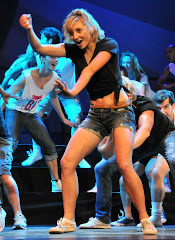
A Dance to the Music of Time: Aesthetically-Relevant Changes in Body Posture in Performing Art
Elena Daprati1,2, Marco Iosa3, Patrick Haggard4*
1 Dipartimento di Neuroscienze and Centro di Biomedicina Spaziale, Università degli Studi di Roma Tor Vergata, Roma, Italy, 2 Dipartimento di Fisiologia Neuromotoria, IRCCS Fondazione Santa Lucia, Roma, Italy, 3 Dipartimento di Scienze del Movimento Umano e dello Sport, Istituto Universitario di Scienze Motorie, Rome, Italy, 4 Institute of Cognitive Neuroscience, University College London, London, United Kingdom
A fascinating in-depth study has been published which aims to explore whether classical ballet positions are performed differently over time, specifically the relation between individual aesthetic experience and changes in art objects. ("In performing arts, body postures are both means for expressing an artist's intentions, and also artistic objects, appealing to the audience".) And if they are, is it due to dancer preference, audience preference (both newcomers and experienced observers), better training, dancer fitness, motor capability or is it a cultural preference which initiates the change ?
In classical ballet body positions are codified, and have been since 1760, and the research uses archive material from The Royal Ballet over a 60 year period to show leg elevation angles. Among the dancers included were Fonteyn, Beriosova, Bussell, Durante, Mason and Marquez. The team measured joint angles rather than limb positions as they do not depend on, for example, the body size of the dancer.
The research was based on Marius Petipa’s version of The Sleeping Beauty and used an excerpt called “The Rose Adagio” from Act 1 – a variation much feared among ballerinas for its test of balance. The Rose Adagio is particularly testing for dancers because it comes straight after a fairly quick solo and very soon after the ballerina has first appeared on stage. It is especially difficult for an athlete to steady a racing heartbeat suddenly, in order to perfect the static poses required of The Rose Adagio, and that is before you consider the added pressure that most knowledgeable ballet-goers will be keenly anticipating this excerpt, much as they would the famous 32 fouettes in Swan Lake. The team considered that “in such postures, the angle of the elevation of the working leg relative to the standing leg is related to both the skill of the dancer, and to the audience’s perception”.
The productions of The Sleeping Beauty used were from 1946-2004 and the research was carried out using photographs and videos. The “Fairy of purity” variation from the Prologue of the same ballet was also studied, as it is traditionally danced by younger and less experienced ballerinas and they wanted to see whether changes over time were reflective of just a few outstandingly talented dancers or a general trend.
What were the team able to conclude from this study ?
Over time there has been a progressive and general change in dancer’s body positions over successive productions; specifically that the working leg is indeed lifted higher nowadays.
When you consider that the choreography is fixed and passed on through the generations working for the same company in this study, the team found that the dancers in fact “appeared to perfect the biomechanics of the movement, perhaps by increasing hip turnout, and consequently the range of movement of the working leg”.
Throughout their studies, they found that trunk position remains unchanged, whether or not the dancer was supported, and that it was specifically the position of leg elevation which had changed, resulting in an increasingly vertical body position.
There is still much debate over why these changes have occured, but the report makes interesting reading and hopefully further research will be carried out in future.




.jpg)




.jpg)



.jpg)







































Fascinating!S
ReplyDelete